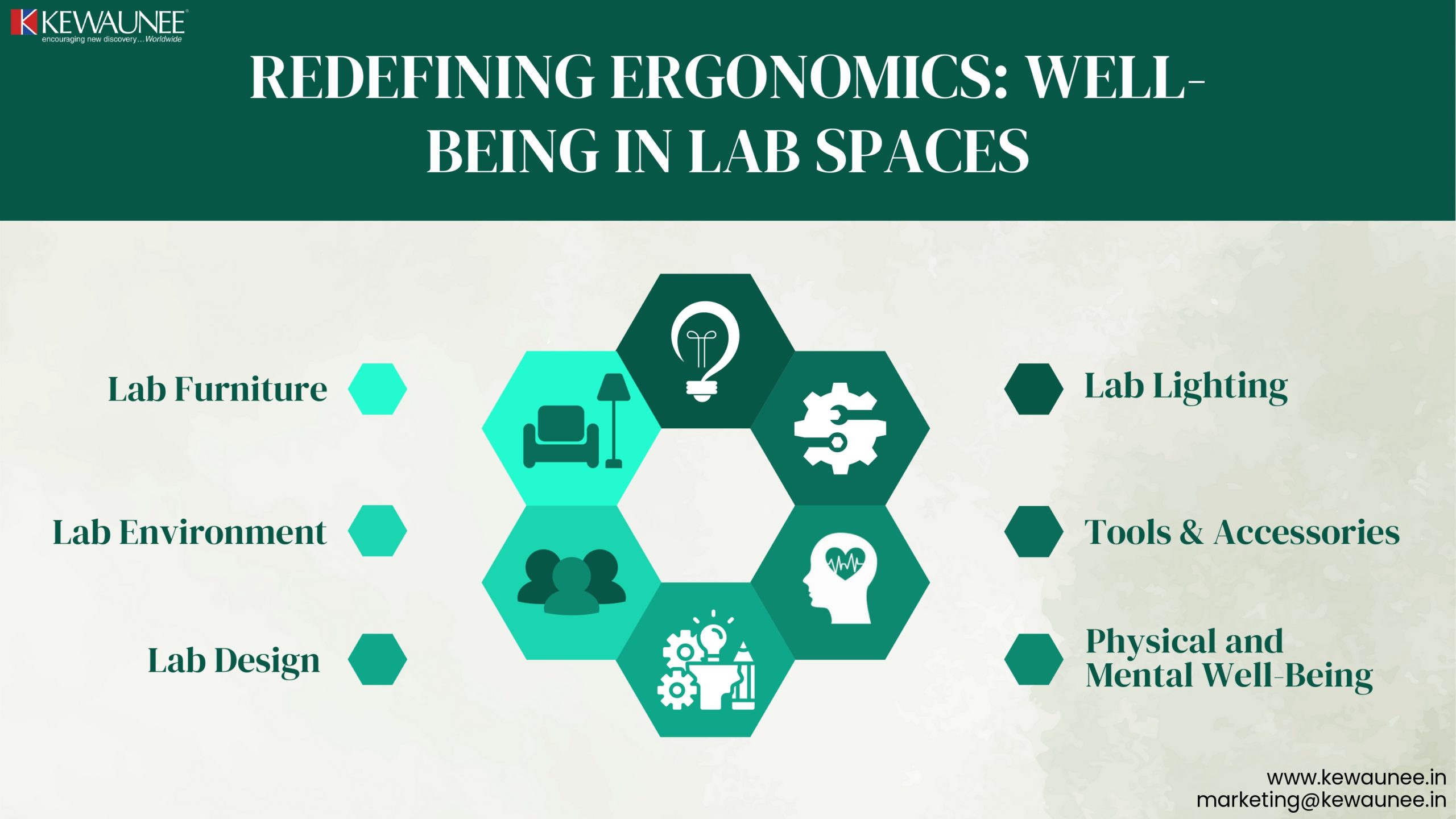Redefining Ergonomics: Well-Being in Lab Spaces
Introduction
The Importance of Ergonomics in Lab Settings In the fast-paced and demanding environment of research labs, ergonomic design plays a crucial role in ensuring the well-being and productivity of researchers. Proper ergonomic principles not only promote comfort but also reduce the risk of injuries and musculoskeletal disorders.
Understanding the Impact of Well-Being on Research Productivity Well-being in lab spaces goes beyond physical comfort; it encompasses mental and emotional aspects that directly affect the quality of research outcomes. By prioritizing well-being, labs can create a conducive environment for innovation and scientific breakthroughs.
The Science of Ergonomics
A. What is Ergonomics and Why is it Important?
Ergonomics is the science of designing workspaces and tools to fit the capabilities and limitations of human users. In lab settings, ergonomic considerations are vital for improving researcher efficiency, safety, and overall satisfaction.
B. Ergonomic Principles for Lab Spaces
- Proper Posture and Body Mechanics Maintaining correct posture and using proper body mechanics during lab work prevent strain and fatigue, reducing the risk of work-related injuries.
- Designing Workstations for Comfort and Efficiency Ergonomic workstation design ensures that researchers can work comfortably for extended periods without experiencing discomfort or fatigue.
- Reducing Repetitive Motion Injuries By addressing repetitive motion tasks through ergonomic solutions, labs can minimize the risk of repetitive strain injuries (RSIs) among researchers.
The Role of Furniture in Lab Ergonomics
- Lab Chairs: Supporting Researchers for Extended Hours Ergonomic lab chairs provide adjustable features and lumbar support, promoting good posture and reducing the risk of back pain during long work sessions.
- Adjustable Workbenches: Customizing Height for Comfort Height-adjustable workbenches allow researchers to set the workstation at an optimal height, reducing strain on the neck, back, and shoulders.
- Lab Stools and Seating Alternatives: Promoting Movement and Flexibility Offering ergonomic lab stools and seating alternatives encourages researchers to alternate between sitting and standing, promoting movement and reducing sedentary behavior.
Lighting and Its Impact on Well-Being
- Importance of Adequate Lighting in Labs Proper lighting is essential for reducing eye strain, preventing headaches, and ensuring accurate visual perception during lab work.
- Natural vs. Artificial Lighting: Striking the Right Balance Integrating natural lighting when possible and complementing it with appropriate artificial lighting helps create a pleasant and comfortable lab environment.
- Reducing Eye Strain and Fatigue with Proper Lighting Design Optimizing lighting placement and brightness levels reduces eye strain and fatigue, fostering a conducive workspace for researchers.
Creating Healthy Lab Environments
- Indoor Air Quality: Ventilation and Air Circulation Proper ventilation and air circulation maintain a healthy indoor environment, preventing the buildup of pollutants and enhancing researchers’ well-being.
- Temperature and Humidity Control: Ensuring Comfort for Researchers Maintaining optimal temperature and humidity levels in labs ensures the comfort and well-being of researchers during their work.
- Noise Reduction Strategies: Minimizing Distractions and Stress Implementing noise reduction measures creates a quieter and less distracting environment, promoting focus and reducing stress.
Ergonomic Tools and Accessories for Lab Researchers
- Ergonomic Pipettes and Microscopes: Reducing Strain and Discomfort Ergonomically designed pipettes and microscopes reduce hand fatigue and strain, enhancing precision and accuracy in lab experiments.
- Anti-Fatigue Mats: Supporting Researchers During Prolonged Standing Anti-fatigue mats provide cushioning and support, reducing the strain on researchers’ legs and feet when standing for extended periods.
- Wrist Supports and Mouse Pads: Preventing Repetitive Stress Injuries Ergonomic wrist supports and mouse pads minimize the risk of repetitive stress injuries by maintaining neutral wrist positions during computer work.
User-Centric Lab Design
- Conducting Ergonomic Assessments for Lab Spaces Performing ergonomic assessments of lab spaces helps identify areas for improvement and ensures the design aligns with researchers’ needs.
- Involving Researchers in the Design Process Including researchers in the lab design process empowers them to contribute insights into creating a comfortable and functional workspace.
- Flexibility and Adaptability in Lab Layouts for Changing Needs Flexible lab layouts accommodate changing research requirements, enabling easy adjustments and reconfigurations as projects evolve.
Promoting Physical and Mental Well-Being
- Encouraging Movement and Breaks During Work Hours Promoting regular breaks and physical movement during work hours combats sedentary behavior and boosts energy and focus.
- Supporting Mental Health: Creating Stress-Free Zones Designating stress-free zones in the lab, such as relaxation corners, helps researchers manage stress and improve overall well-being.
- Integrating Nature and Biophilic Design in Lab Spaces Incorporating elements of nature through biophilic design enhances well-being, reduces stress, and fosters a connection to the natural environment.
Training and Education on Ergonomics
- Providing Ergonomic Training for Lab Personnel Conducting ergonomic training equips lab personnel with the knowledge and skills to adopt best ergonomic practices and prevent injuries.
- Raising Awareness of Ergonomic Best Practices Raising awareness of ergonomic best practices creates a culture of well-being in the lab and encourages researchers to prioritize their health.
- Empowering Researchers to Advocate for Well-Being Empowering researchers to advocate for their well-being fosters a collaborative effort in creating a safer and healthier lab environment.
Conclusion
A holistic Approach By implementing ergonomic principles and prioritizing well-being, labs can create a holistic approach to enhance researcher productivity and satisfaction.
The Impact of Well-Being on Research Success Investing in well-being positively impacts research outcomes, leading to higher productivity, creativity, and overall job satisfaction.
Commitment to Creating Healthier and More Productive Lab Environments Embracing ergonomic design and a well-being-focused approach reflects a commitment to creating labs that prioritize the health and success of researchers.
Comments are closed.











